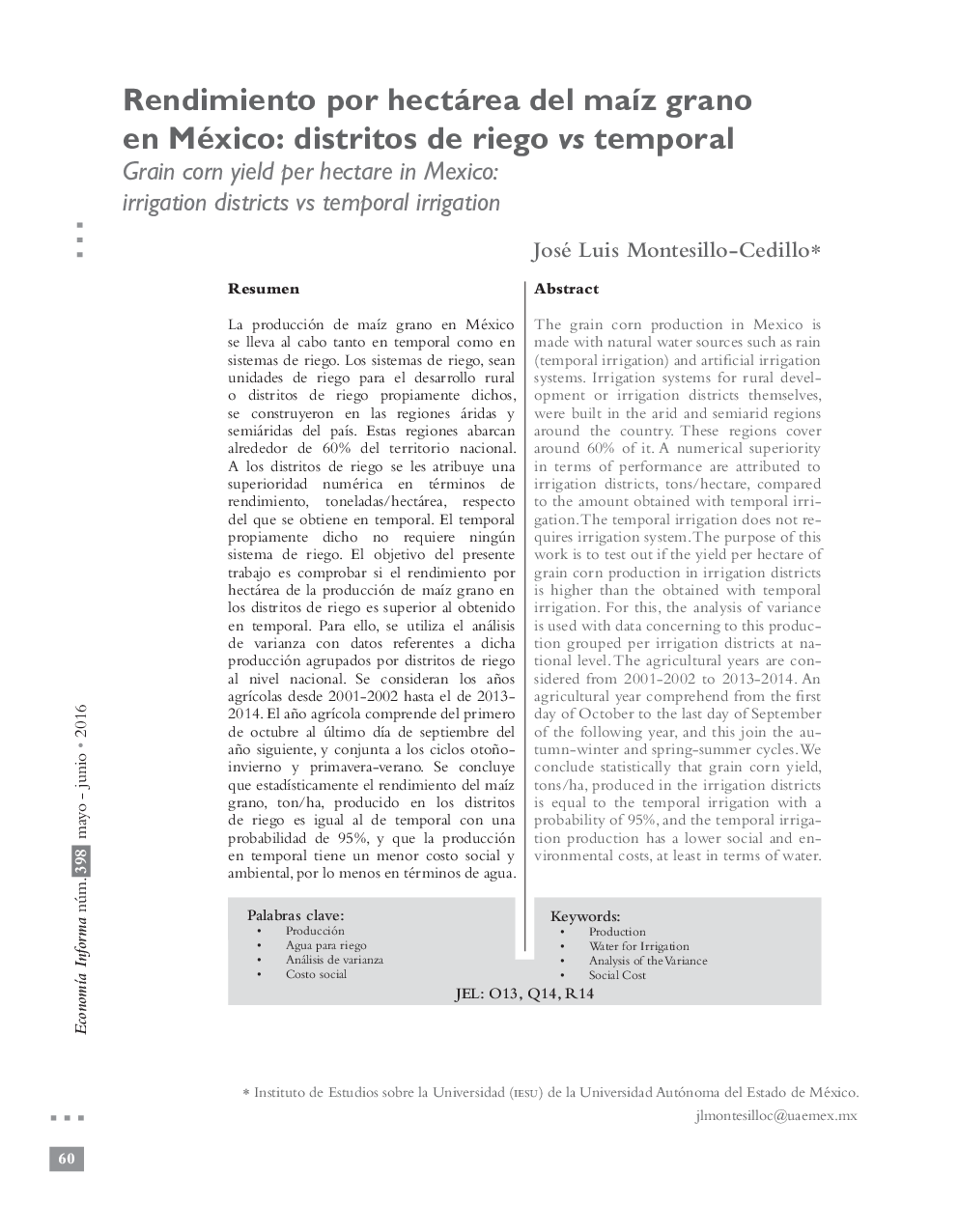| Article ID | Journal | Published Year | Pages | File Type |
|---|---|---|---|---|
| 7344986 | Economía Informa | 2016 | 15 Pages |
Abstract
The grain corn production in Mexico is made with natural water sources such as rain (temporal irrigation) and artificial irrigation systems. Irrigation systems for rural development or irrigation districts themselves, were built in the arid and semiarid regions around the country. These regions cover around 60% of it. A numerical superiority in terms of performance are attributed to irrigation districts, tons/hectare, compared to the amount obtained with temporal irrigation. The temporal irrigation does not requires irrigation system. The purpose of this work is to test out if the yield per hectare of grain corn production in irrigation districts is higher than the obtained with temporal irrigation. For this, the analysis of variance is used with data concerning to this production grouped per irrigation districts at national level. The agricultural years are considered from 2001-2002 to 2013-2014. An agricultural year comprehend from the first day of October to the last day of September of the following year, and this join the autumn-winter and spring-summer cycles. We conclude statistically that grain corn yield, tons/ha, produced in the irrigation districts is equal to the temporal irrigation with a probability of 95%, and the temporal irrigation production has a lower social and environmental costs, at least in terms of water.
Related Topics
Social Sciences and Humanities
Economics, Econometrics and Finance
Economics and Econometrics
Authors
José Luis Montesillo-Cedillo,
